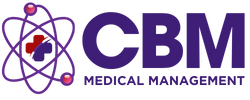The Art of Crafting and Sharing an Effective Job Description
Backed by CBM Medical Management‘s 40 years of experience in Revenue Cycle Management and Practice Start-up, this guide dives into the nuanced art of creating and disseminating job descriptions that not only attract the right candidates but also reflect your organization’s values and goals. Whether you’re a startup in the bustling world of technology or a seasoned player in the healthcare sector, understanding the key components of an effective job description can set the foundation for a successful hiring process.
Why Is a Job Description Important?
Before we delve into the how-to, let’s talk about the why. A well-crafted job description serves multiple critical functions:
- Clarity: It clearly outlines the role, responsibilities, and expectations, setting the stage for future performance evaluations.
- Attraction: It acts as a magnet for the right talent by detailing not only the skills and experience required but also the values and culture of your organization.
- Legal Compliance: It provides a legal foundation that can help prevent discriminatory hiring practices and sets clear standards for applicants.
Key Elements of an Effective Job Description
Creating an effective job description involves more than listing duties and qualifications. It’s about storytelling—painting a picture of the daily life in the role, the team they’ll be part of, and the impact they’ll have. Here are the essential ingredients:
- Job Title: Keep it simple and searchable. Avoid creative titles that might confuse job seekers.
- Role Overview: Provide a concise paragraph that encapsulates the role’s purpose, its contributions to the organization, and how it fits within the team.
- Responsibilities: List the key duties in bullet points, starting with the most critical tasks.
- Requirements: Detail the necessary qualifications, skills, and experience. Be specific but also consider including a ‘nice-to-have’ section for aspirational qualities.
- About Your Company: Share your mission, values, and what makes your organization unique. This helps candidates assess fit.
- Salary and Benefits: Transparency in compensation and benefits promotes trust and can significantly increase applications.
Sharing Your Job Description
Once you’ve crafted your job description, it’s time to share it with the world. Here’s how:
- Post on your company’s career page and leverage organic traffic.
- Utilize job boards and platforms specifically targeting your industry.
- Share on social media and in professional groups to reach a wider audience.
- Consider leveraging virtual assistant services to manage postings and filter applications efficiently.
Conclusion
Remember, an effective job description is your first point of contact with potential future employees. It sets the tone for your organization’s culture and values and is a pivotal tool in attracting the right talent. With the insightful guidance borne of CBM Medical Management‘s extensive experience, you’re well-equipped to craft job descriptions that stand out, resonate with your target candidates, and ultimately, contribute to your organization’s success.


